Science
(www.olympiadsuccess.com)
Chapter 7: Getting To Know Plants
Class: VI
Exemplar Solutions
Multiple Choice Questions
Question 1
Which of the following combination of features would you observe in grass?
(a) Parallel venation and fibrous root
(b) Parallel venation and tap root
(c) Reticulate venation and fibrous root
(d) Reticulate venation and tap root
Answer 1
(a)
Question 2
Which of the following is the correct match between the characteristics of stem and the category of plant?
(a) weak stem which cannot stand upright : Creeper
(b) green tender stem : Shrub
(c) thick, hard stem with branching near the base : Tree
(d) thick, hard stem with branches high on the plant : Herb
Answer 2
(a)
Question 3
Which of the following is not the primary function of stem?
(a) Conduction of water
(b) Photosynthesis
(c) Formation of branches
(d) Bears flowers and fruits
Answer 3
(b)
Question 4
Which of the following is not a correct match?
(a) Petiole : attaches leaf to stem
(b) Lamina : green flat part of leaf
(c) Margin : gives shape to the leaf
(d) Veins : transpiration
Answer 4
(d)
Question 5
Read the following sentences about photosynthesis:
(i) Sunlight, carbon dioxide, chlorophyll and water are necessary.
(ii) Oxygen is absorbed.
(iii) Leaves carry out photosynthesis.
(iv) Proteins are made during photosynthesis.
Choose the correct pair of sentences that are true to photosynthesis
(a) (iii) and (iv) (b) (i) and (iii)
(c) (ii) and (iv) (d) (i) and (iv)
Answer 5
(b)
Question 6
Which of the following terms constitute the female part of the flower.
(a) sepals, petal and stamen
(b) stigma, style and ovary
(c) ovary, stamen and stigma
(d) ovary, style and stamen
Answer 6
(b)
Very Short Answer Questions
Question 7
Fill in the blanks:
(a) The small green leaves at the base of flowers are known as ------------.
(b) The swollen basal part of the pistil is the ----------------- which bears the ----------.
(c) Stamen has two parts called ------------- and ------------.
(d) The young unopened flower is termed as -------------.
Answer 7
a– sepals; b– ovary, ovules; c– filament, anther; d– bud
Question 8
Solve the riddles given below:
(a) "I have a green tender stem and I am much shorter than you. Who am I?"
(b) I come out first from the seed when it is soaked in water. I provide anchorage to plants. Who
am I? Write another function that I perform.
Answer 8
(a) Herb or name of any small plant.
(b) Root; absorption of water and minerals.
Short Answer Questions
Question 9
Match the parts of plant given in Column I with their function in Column II
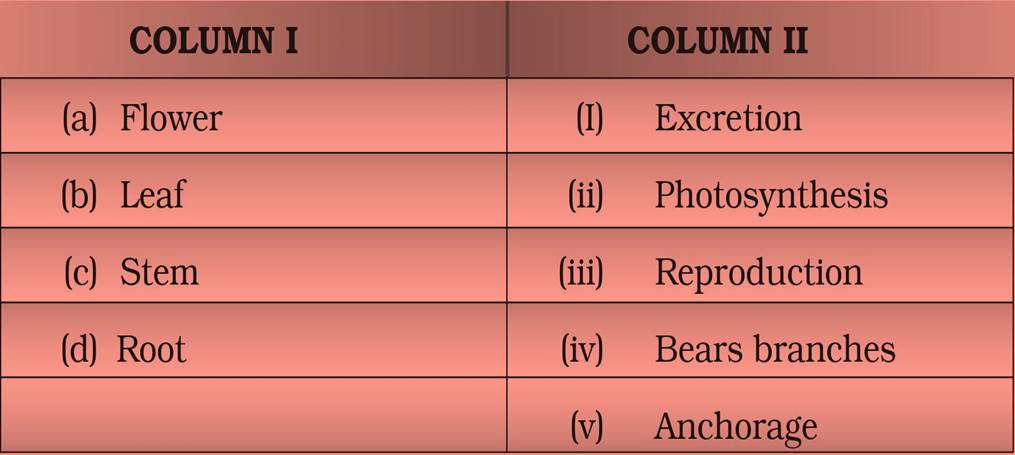
Answer 9
a– (iii); b– (ii); c– (iv); d– (v)
Question 10
Boojho wanted to test the presence of starch in leaves. He performed the following steps.
(1) He took a leaf and boiled it in water,
(2) He placed the leaf in a petri dish and poured some iodine over it.
He did not get the expected result. Which step did he miss?
Explain.
Answer 10
He did not boil the leaf in spirit to remove the chlorophyll.
Question 11
Will a leaf taken from a potted plant kept in a dark room for a few days turn blue black when tested for starch? Give reasons for your answer.
Answer 11
No, all the starch stored in the leaf would have been used up by the plant. No starch would be synthesized afresh due to non-availability of sunlight.
Question 12
Can the stem of a plant be compared with a street with two–way traffic? Give reason.
Answer 12
Yes, water and minerals move upwards and food moves downwards.
Long Answer Questions
Question 13
Read the function of parts of a plant given below:
(a) fixes plant to the soil
(b) prepares starch
(c) takes part in reproduction
(d) supports branches and bears flowers
In the diagram given in Fig. 7.1, write the names of the parts whose functions you have just read at the appropriate space.
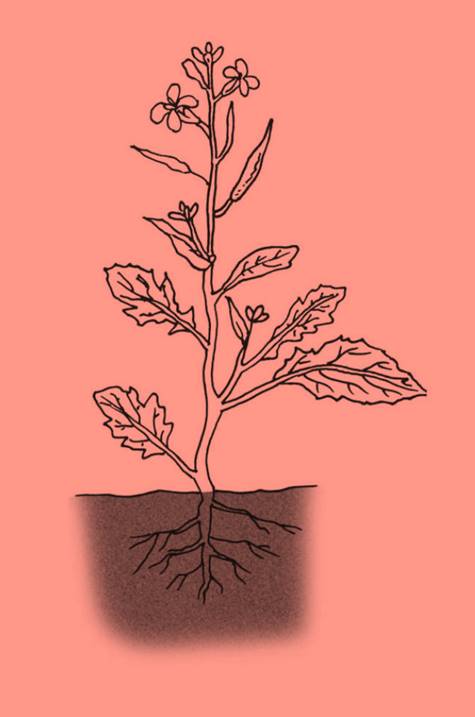
Fig.7.1
Answer 13
a– root; b– leaf; c– flower; d– stem
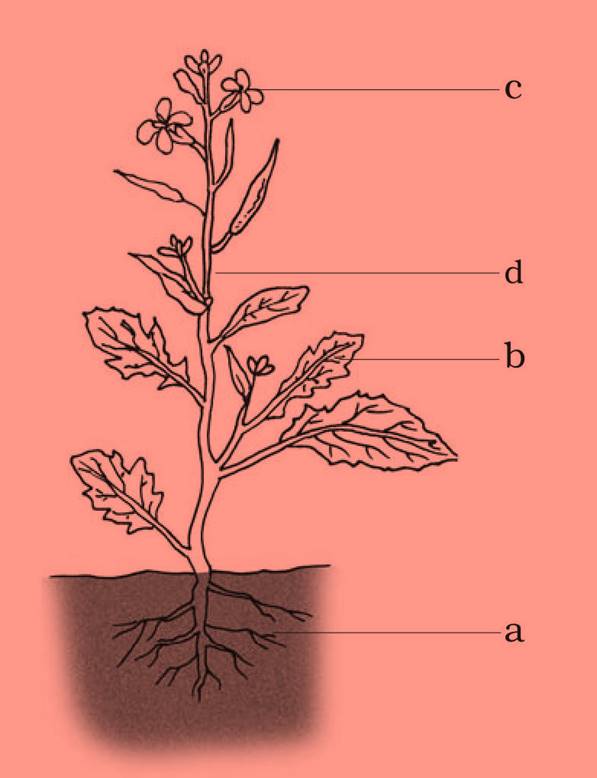
Question 14
Draw the veins of leaves given in Fig. 7.2 below and write the type of venation.

Question 15
Observe Fig. 7.3 and attempt the questions that follow it.
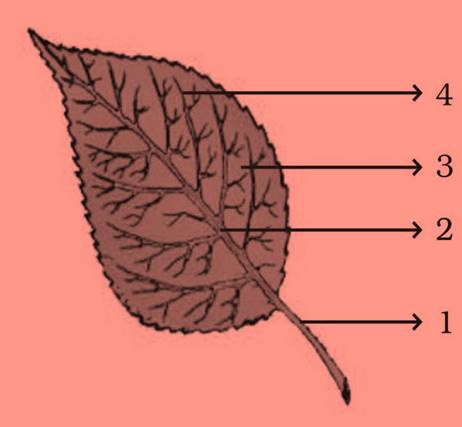
Fig.7.3
(a) Label the parts 1, 2, 3 and 4 in the diagram.
(b) What type of venation does the leaf has?
(c) What type of venation is seen in grass leaves?
Answer 15
(a)
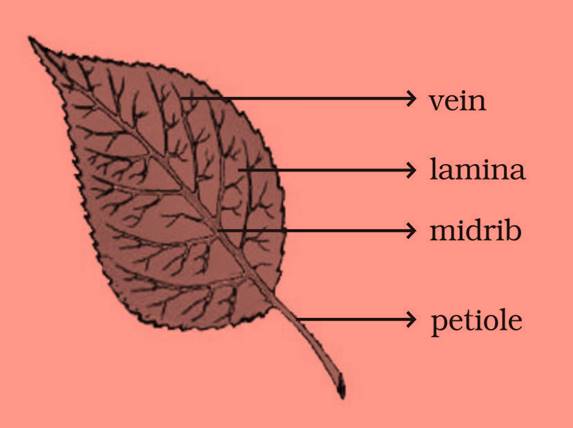
(b) Reticulate venation
(c) Parallel venation
Question 16
Observe the picture of an activity given as Fig. 7.4 carried out with leaves of plants and polythene bag.
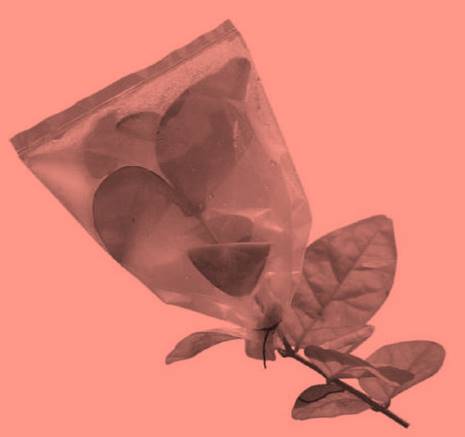
Fig.7.4
Now answer the following:
(a) Which process is demonstrated in the activity?
(b) When will this activity show better results – on a bright sunny day or a cloudy day?
(c) What will you observe in the polythene bag after a few hours of setting up the activity?
(d) Mention any one precaution you must take while performing this activity.
Answer 16
(a) Transpiration.
(b) On a bright sunny day.
(c) Small drops of water inside the polythene cover.
(d) The set-up must be airtight/polythene bag must be dry/ the twig must be fresh with 10-12 leaves.
Question 17
Identify the wrong statements and correct them.
(a) Anther is a part of the pistil.
(b) The visible parts of a bud are the petals.
(c) Lateral roots are present in a tap root.
(d) Leaves perform the function of transpiration only.
Answer 17
(a) Wrong– Anther is a part of the stamen.
(b) Wrong– The visible parts of a bud are the sepals.
(c) Correct.
(d) Wrong– Leaves also perform photosynthesis.
Question 18
Solve the crossword given in Fig. 7.5 as per the clues given below it:
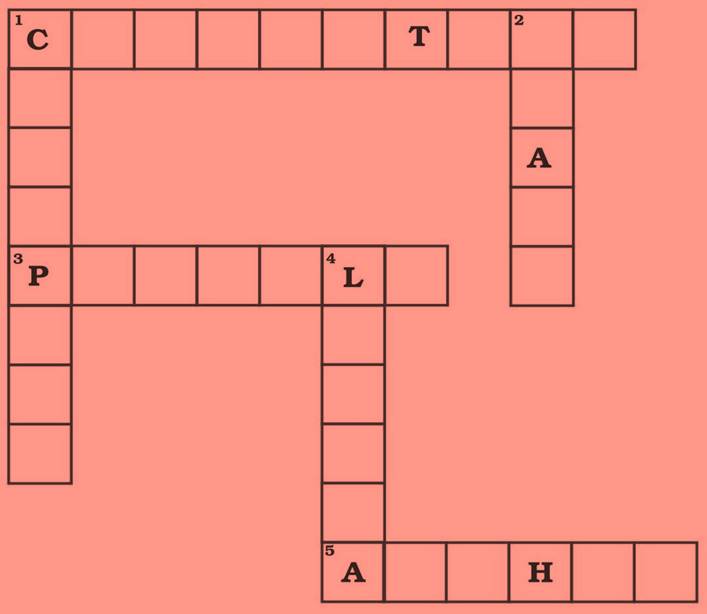
Fig.7.5
Across
Down
Answer 18
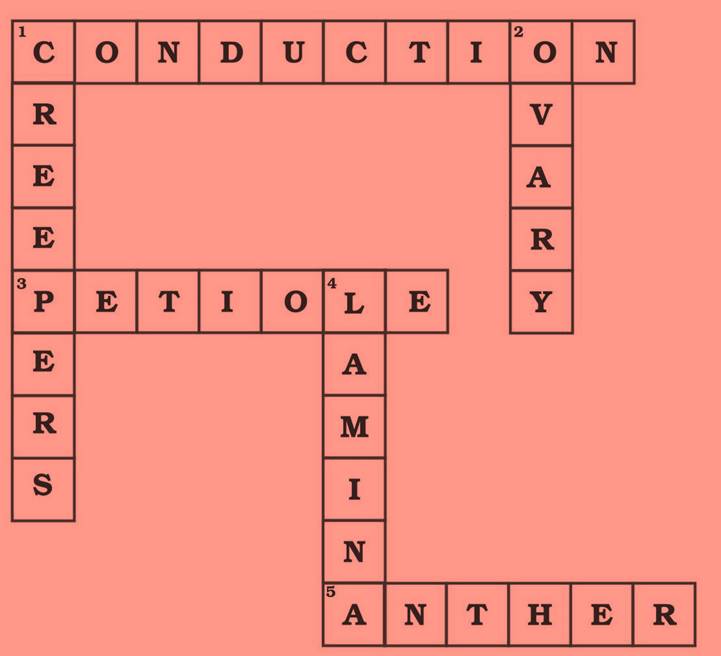
Question 19
Fill in the blanks with the terms that are listed below:
anther, male, ovary, ovule, petals, pistil, stamen, filament.
Sepals, ______(a)______, stamens and ______(b)______ are the parts of a flower. Stamen is made up of ______(c)______ and ______(d)______ and it represents the ______(e)______ part of the flower. The female part of the flower is called the ______(f)______. The basal, swollen part of the pistil is called the ______(g)______ which contains the ______(h)______.
Answer 19
(a)– sepals; (b)– petals; (c)– pistil; (d)– filament; (e)– anther; (f)– male; (g)– pistil; (h)– ovary;
(i)– ovules
Yearlong program for Olympiads preparation & to build necessary skills for future.
Explore More
Time to mark your calendar with the upcoming Olympiads exam schedule.
Explore More
Take your Olympiad preparation to next-level by taking LIVE Classes.
Explore More
Assess your performance by taking topic-wise and full length mock tests.
Explore More
Online tuitions for international compeitions like SASMO, SEAMO, etc for Grades 1-11.
Explore More